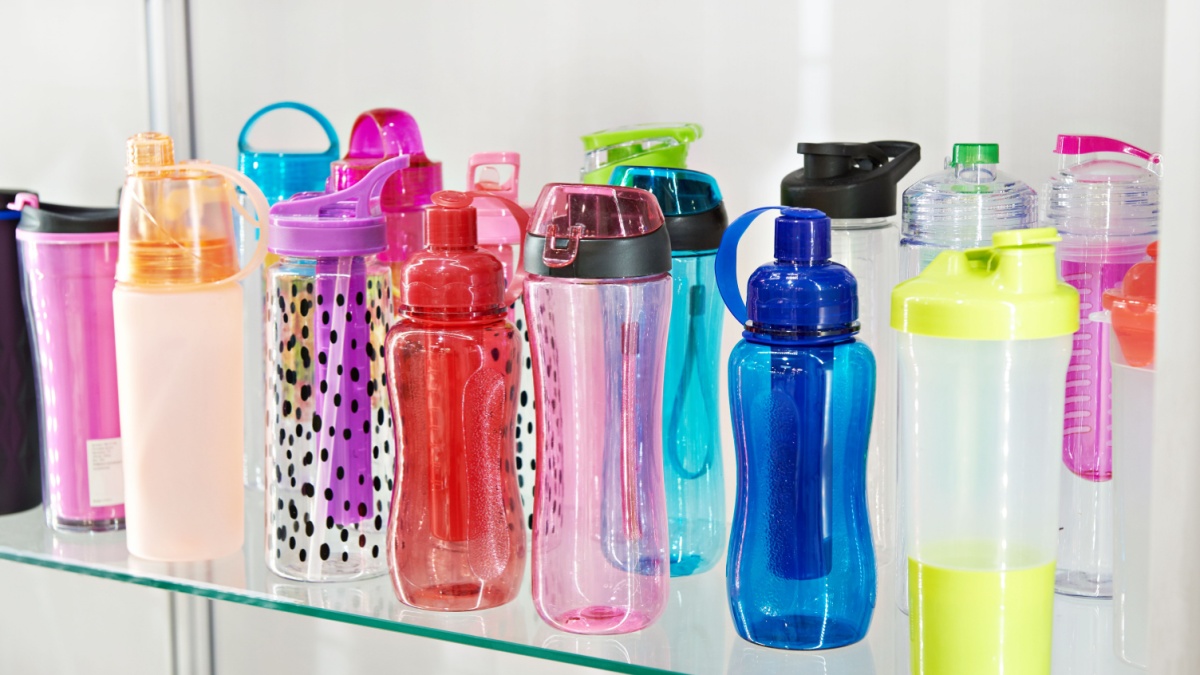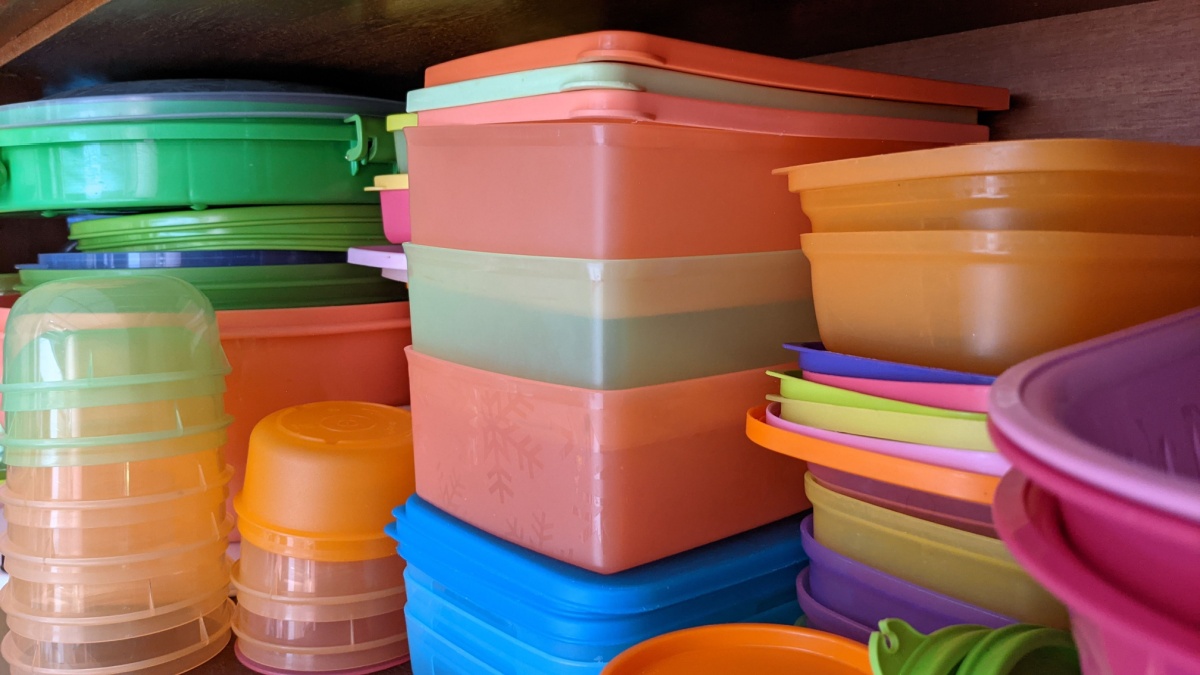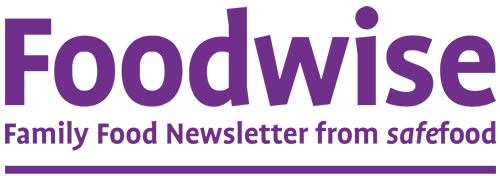BPA ban on food packaging

The Bisphenol A (BPA) ban on food packaging is welcome, but does it go far enough? David Burrows looks at the evidence.
A long-awaited ban on BPA
In December, the European Commission adopted a ban on the use of Bisphenol A (BPA) in food contact materials. The ban means that the endocrine-disrupting chemical will not be allowed in products that come into contact with food or drink.
So, we’re talking about the coating on metal cans, reusable plastic drink bottles, water distribution coolers and other kitchenware.
Campaigning groups are delighted that the risks from this chemical migrating from packaging to our food and drink are being further restricted.
“People’s health will be more protected from this known endocrine-disrupting chemical, which has also been classified as toxic for reproduction,” says Sandra Jen, programme lead for health and chemicals at HEAL, the Health and Environmental Alliance.
It is “much overdue”, she says, adding that BPA (and other bisphenols) “have been linked to breast cancer, infertility, early puberty, diabetes and obesity”, as well as “neurological disorders in children”.

This is a substance that has been under intense regulatory scrutiny for a number of years (with its use in infant bottles banned more than a decade ago), explains Marie Escorneboueu, part of the European public policy team at law firm Squire Patton Boggs. This is therefore the latest “important reduction” of its use in food contact materials (FCMs), she adds.
EFSA’s damning assessment
The ban comes as little surprise since EFSA, the European Food Safety Authority, concluded in 2023 that dietary exposure to BPA is a health concern for consumers across all age groups.
In an extensive assessment of the scientific evidence, and after input from a public consultation, EFSA’s experts identified “potentially harmful health effects on the immune system”. In scrutinising a vast quantity of scientific publications, including over 800 new studies published since January 2013, the authority said it was able to “address important uncertainties” in relation to BPA’s toxicity
“Our scientists have examined the safety of BPA in great detail over the years since our first full risk assessment of the substance in 2006,” explained Dr Claude Lambré, chair of EFSA’s panel on Food Contact Materials, Enzymes and Processing Aids. “In the studies, we observed an increase in the percentage of a type of white blood cell, called T helper, in the spleen. They play a key role in our cellular immune mechanisms and an increase of this kind could lead to the development of allergic lung inflammation and autoimmune disorders,” he added.
The research led to a significant lowering of the TDI – the tolerable daily intake – for BPA to 0.2 nanograms of BPA per kg of body weight per day or 0.2 billionths of a gram, which is 20,000 times lower than the temporary one set in 2015. And that meant that people with average and high exposure to BPA exceeded the new limit “indicating health concerns”. EU member states, the council and the parliament reacted to the new ban – which includes a phase-out period of 18-36 months
So, what does the ban actually mean for food safety and is it enough?
These are big questions with no immediate answers. The ban means that BPA will not be allowed in products that come into contact with food or drink. For certain products there is a derogation until stocks are exhausted. There is a long road ahead to find suitable, safe substitutes too.
BPA is blatantly very useful: it is the starting substance of a very durable and heat-resistant plastic polymer – polycarbonate – and can be found in reusable food containers, bottles and kitchenware. But it’s also a component in epoxy-based coatings (BPA-diglycidyl ether) for wine and beer tanks, as well as food and drink cans. These coatings ensure the metal doesn’t impair the taste of the contents and help to increase shelf life.

Indeed, a study published in the Journal of Hazardous Materials in March 2024 showed bisphenol levels were higher on average in canned beverages compared to glass and plastic packaging products produced by the same brand and manufacturer. Two structural isomers of BPA were identified in 19 beverages, “constituting the first detection in foodstuffs”, the researchers from Australia, France and the UK noted. “The calculated daily intake of detected EDCs [endocrine-disrupting chemicals] showed that exposure to BPA from per capita beverage consumption of 364 mL/day are up to 2000-fold higher than the newly revised safety guideline for BPA recommended by the EFSA,” they wrote. “Overall, these findings suggest that BPA exposure poses a potential health hazard for individuals who regularly consume non-alcoholic beverages packaged in aluminium or tin cans, particularly young children.
Drink to your ill health
The impact of the ban won’t be felt overnight. There was lobbying against the restrictions, but campaign groups argue that the impacts on the industry should be “rather low” given how long manufacturers have had to prepare – BPA was banned from baby bottles in 2011. Sweden, Denmark, and Belgium have also already implemented bans on BPA in certain FCMs intended for young children. France, for years a strong advocate for a complete ban on BPA, introduced a comprehensive ban on the manufacture, importation, exportation, and sale of any food packaging containing BPA, effective from 1 January 2015. This applies to food packaging intended for the French market and also to any food packaging manufactured in France and intended to be exported abroad (Plastics Europe, which represents manufacturers, contested this but the European Commission chose not to pursue it).
The big question for manufacturers, and indeed regulators, is how many of the alternatives are not other bisphenols. Campaigners I spoke to for a recent report for ENDS Europe are encouraged by the direction taken with these new rules. They are ‘dynamic’ in scope for example, with newly classified bisphenols automatically covered by the ban (a first for food contact material regulation). This is known as a BPA ban but as Dorota Napierska, policy officer at Zero Waste Europe (ZWS), explains: “The ban covers BPA and other bisphenols (if they are proved to be hazardous) and derivatives of BPA.”
That doesn’t mean there aren’t loopholes. Campaigners and scientists alike would have preferred something more aligned with the precautionary principle that would have restricted more of these compounds. A report by the European Chemicals Agency indicated that at least 34 bisphenols may need to be restricted due to their interference with the hormonal system and effects on reproduction.
“The work on substitution of BPA and other dangerous bisphenols started more than a decade ago following the scientific warnings about the serious health concerns at stake,” says HEAL’s Jen. Unfortunately, as concerns about BPA have grown, the chemical has increasingly been replaced by other bisphenols, including BPS, BPF, BPAF and BPZ – an alphabet soup that few would want to consume. Many of these alternatives are closely related to BPA and “also appear to have similar toxicity”, Jen adds. “We need a precautionary approach that regulates bisphenols as an entire group.”
Research published in the journal Environment International in July 2024 found that “for several BPA alternatives, the data has already provided substantial evidence regarding their potential harm to the environment”. BPA is commonly found “in all environmental compartments” the researchers led by Ondrej Adamovsky from Masaryk University in the Czech Republic wrote, but as restrictions on BPA expand in the coming months and years it is the alternatives that “will dominate in future”.
What’s inside your can?
Jane Muncke is managing director and Chief Scientific Officer at the Food Packaging Forum, which follows the science, policy and opinions around all this more than most. A social media post in March (2025) asked: “What’s inside your can? Canned food and drinks last for years, partly thanks to a thin protective coating inside the can. These coatings prevent reactions between the metal and the food, but they have also been raising questions about their safety due to chemical migration.”
For years, epoxy coatings mostly based on BPA have been the standard, but not anymore. “Currently, only two other bisphenols will fall under the ban,” says Muncke, with those being BPS and 2,2-bis(4-hydroxyphenyl)-4-methylpentane (the latter isn’t thought to be used in food contact materials though). BPF and BPAF will also be banned, she says, with both having been identified as substances of very high concern (SVHCs) under REACH.
Should the ban therefore have been more extensive? The Forum’s FCCmigex database, which systematically maps the scientific evidence of food contact chemicals that have been measured in migrates and extracts of FCMs and articles, shows that BPA has been detected 253 times in these extracts or migrates. Of these entries 140 refer to plastics, 44 to paper and board, 60 to metals, 4 to multi-materials and 6 to ‘other’ FCMs. “This illustrates the broad presence of BPA in FCMs and its migration into foods,” Muncke says, also noting the 177 times that bisphenols other than BPA have been detected too.
The BPA issue should certainly raise concerns and intensify scrutiny of more packaging materials beyond plastic – the go-to villain when it comes to food and drink packaging. Paper and card may well be the one to watch given that the food contact laws on these materials are notoriously vague. For example, EU legislation to control the migration of chemicals into food from food contact materials sets standards (specific migration limit) for bisphenols in plastics but does not set such standards for paper and cardboard, notes ZWS’s Napierska.

Testing your takeaway
Hundreds of chemicals have been measured in food packaging made from recycled paper and cardboard, as well as in packaged food. One of the most recent studies, albeit using a very small sample, produced another set of alarming results: research by consumer group and accompanying magazine Ökotest showed BPA in worrying amounts in pizzas boxes made from recycled cardboard. Only one pizza box, from Pizza Hut, tested negative for both BPA and BPS, reported Food Safety magazine following the tests. A simulation using the 10 tested boxes found chemicals in the pizzas too – one of which would have given someone a daily dose that exceeds the EFSA one by around 45,000%. “That leaves you speechless,” Ökotest said.
Despite their popularity on the back of the plastic backlash, paper packaging is “not tested in the same way as other materials and their food contact is largely unproved to be safe”, says Dan Coppins, a packaging technologist at Pack-Man consulting. “Everything that is destined for food contact should be tested,” he adds. The long-running BPA saga suggests we should be worried about what we might find.




